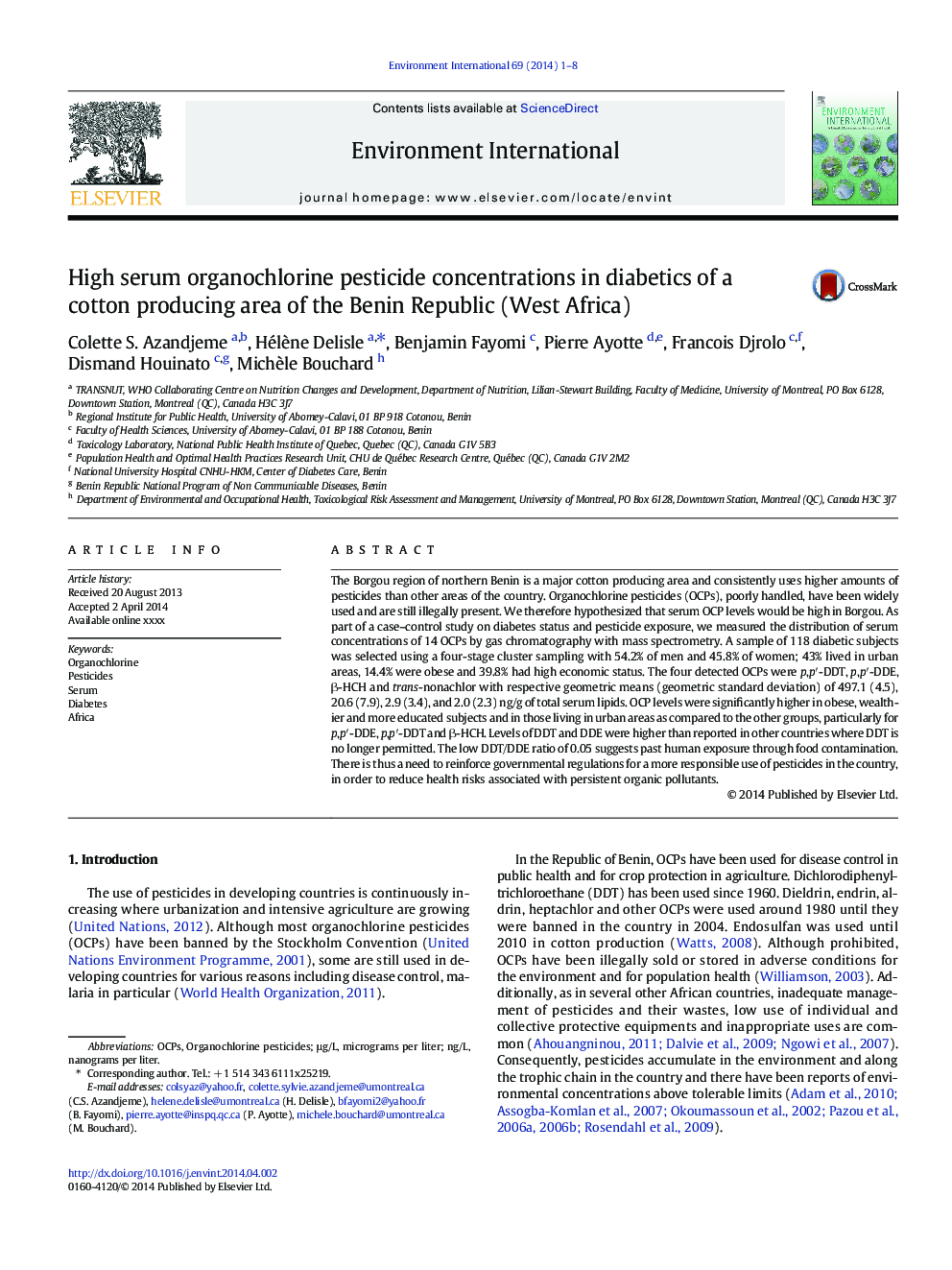| Article ID | Journal | Published Year | Pages | File Type |
|---|---|---|---|---|
| 6313948 | Environment International | 2014 | 8 Pages |
Abstract
The Borgou region of northern Benin is a major cotton producing area and consistently uses higher amounts of pesticides than other areas of the country. Organochlorine pesticides (OCPs), poorly handled, have been widely used and are still illegally present. We therefore hypothesized that serum OCP levels would be high in Borgou. As part of a case-control study on diabetes status and pesticide exposure, we measured the distribution of serum concentrations of 14 OCPs by gas chromatography with mass spectrometry. A sample of 118 diabetic subjects was selected using a four-stage cluster sampling with 54.2% of men and 45.8% of women; 43% lived in urban areas, 14.4% were obese and 39.8% had high economic status. The four detected OCPs were p,pâ²-DDT, p,pâ²-DDE, β-HCH and trans-nonachlor with respective geometric means (geometric standard deviation) of 497.1 (4.5), 20.6 (7.9), 2.9 (3.4), and 2.0 (2.3) ng/g of total serum lipids. OCP levels were significantly higher in obese, wealthier and more educated subjects and in those living in urban areas as compared to the other groups, particularly for p,pâ²-DDE, p,pâ²-DDT and β-HCH. Levels of DDT and DDE were higher than reported in other countries where DDT is no longer permitted. The low DDT/DDE ratio of 0.05 suggests past human exposure through food contamination. There is thus a need to reinforce governmental regulations for a more responsible use of pesticides in the country, in order to reduce health risks associated with persistent organic pollutants.
Related Topics
Life Sciences
Environmental Science
Environmental Chemistry
Authors
Colette S. Azandjeme, Hélène Delisle, Benjamin Fayomi, Pierre Ayotte, Francois Djrolo, Dismand Houinato, Michèle Bouchard,
